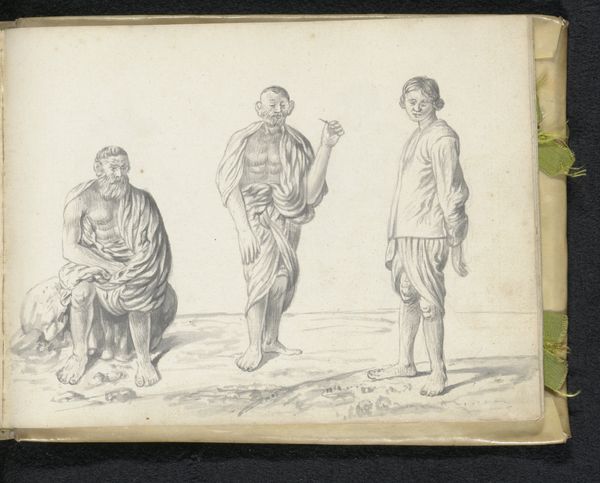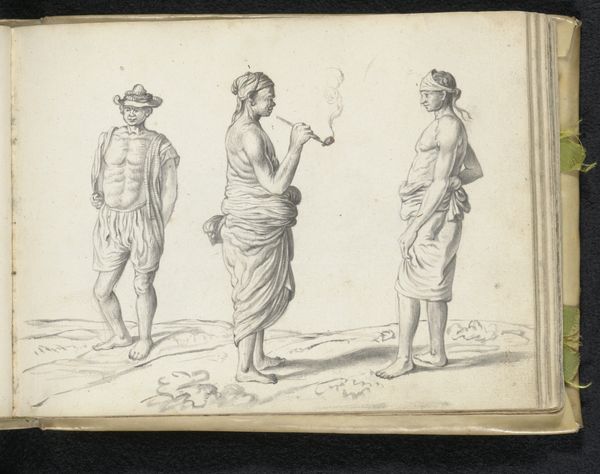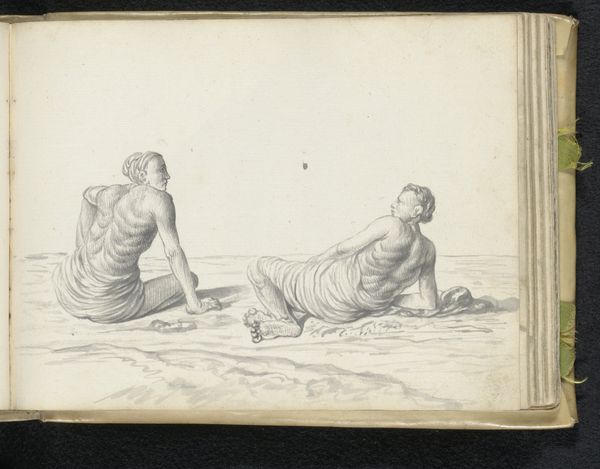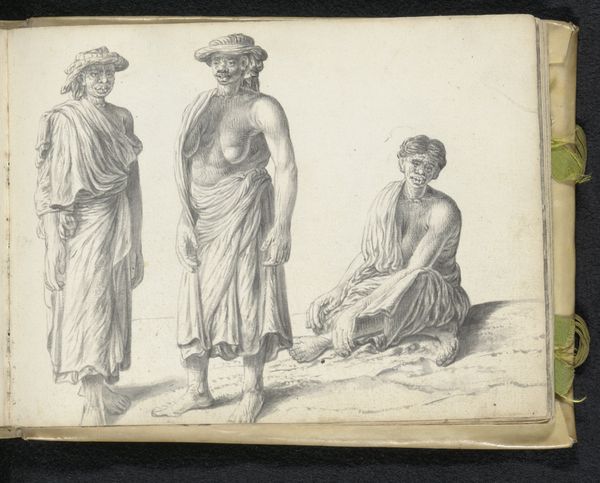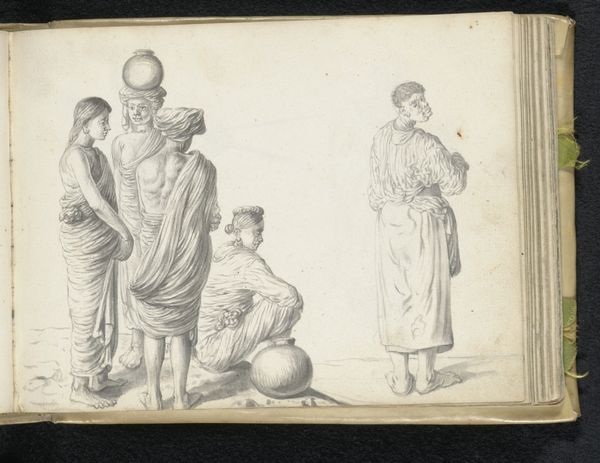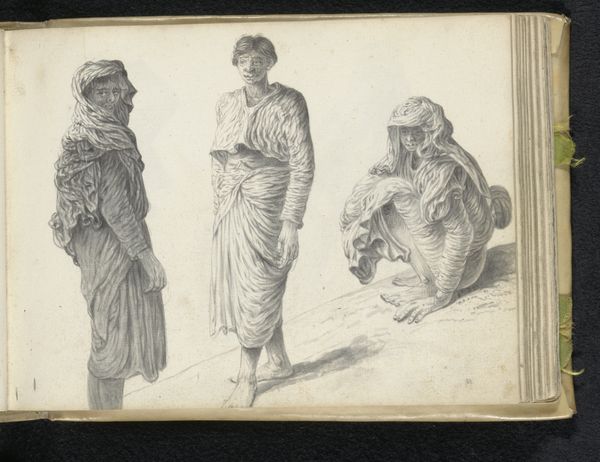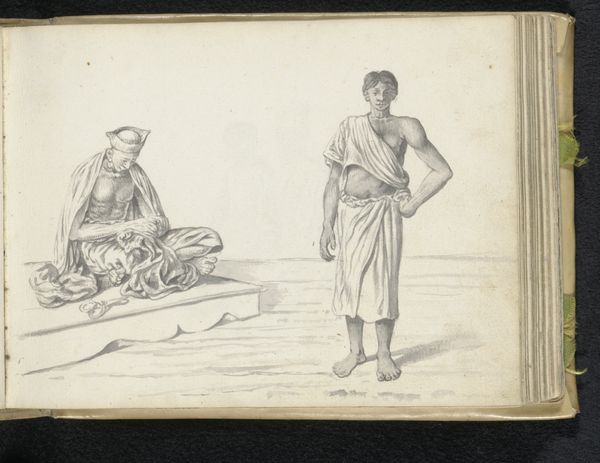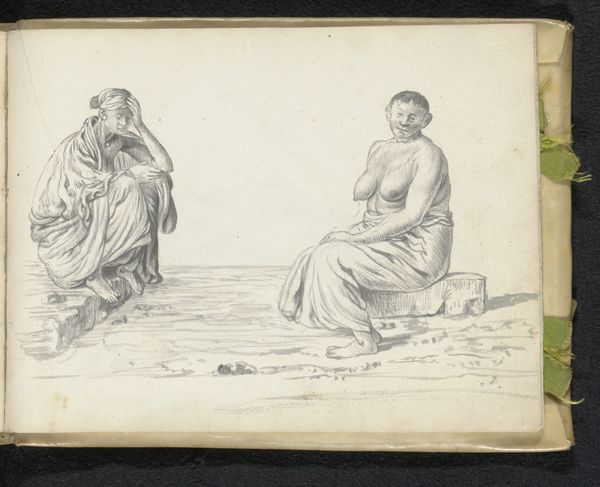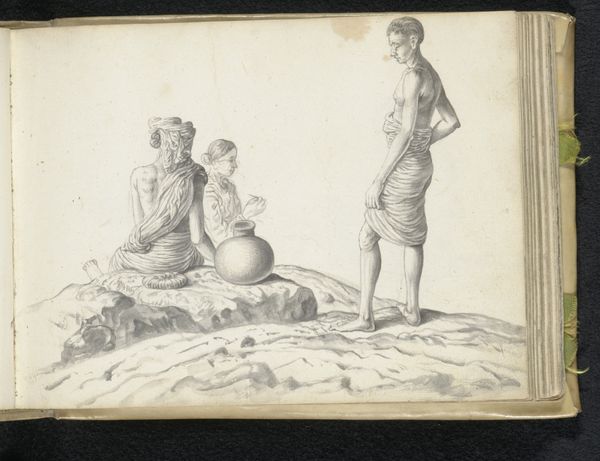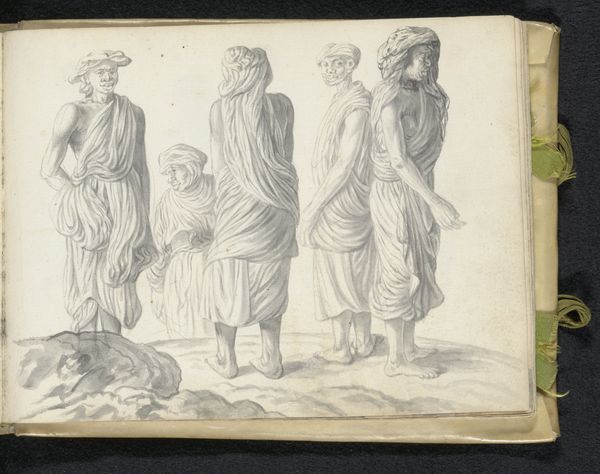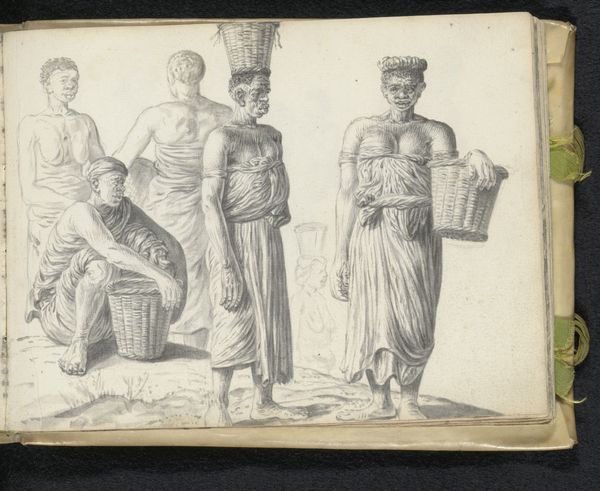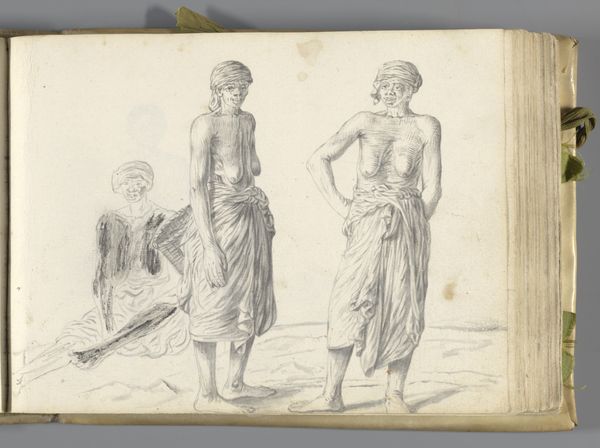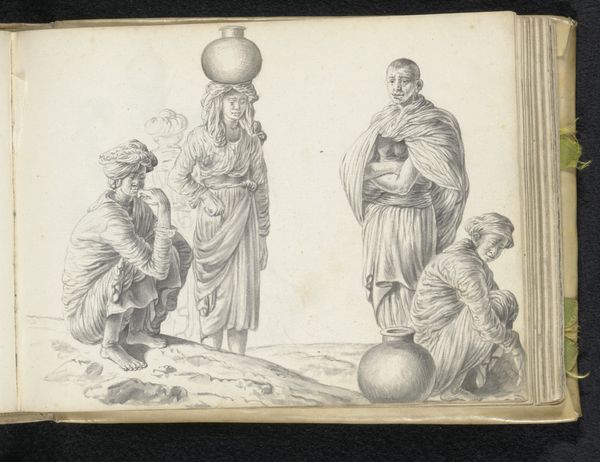
drawing, paper, pencil, pen
#
portrait
#
drawing
#
aged paper
#
light pencil work
#
quirky sketch
#
dutch-golden-age
#
pencil sketch
#
sketch book
#
figuration
#
paper
#
personal sketchbook
#
coloured pencil
#
pencil
#
sketchbook drawing
#
pen
#
genre-painting
#
storyboard and sketchbook work
#
sketchbook art
Dimensions: height 148 mm, width 196 mm
Copyright: Rijks Museum: Open Domain
Editor: Here we have Esaias Boursse’s “Three Labourers in Conversation,” created around 1662. It’s a drawing, primarily in pencil, on paper. I find the sketch almost… wistful? What catches your eye about this piece? Curator: What immediately strikes me is the artist's choice of materials and their connection to the subject matter. Pencil and paper – readily available, inexpensive – align perfectly with depicting the working class. Boursse isn't using precious metals or oils; he's engaging with materials accessible to, or at least reflective of, the labourers he portrays. Editor: That’s a great point! I hadn't considered the socio-economic aspect of even the art supplies. Does the medium impact how we should perceive the image? Curator: Absolutely. The sketch-like quality, born from the use of pencil, suggests a sense of immediacy and observation. It speaks to the labor of creation itself, the hand of the artist actively documenting these figures. It avoids any illusion of grandeur. We see a directness in production. The paper itself, aged and simple, becomes a signifier of time and the everyday struggles these men likely faced. Where do you think such art stood at that time? Editor: I imagine this wouldn’t have the same prestige as a large-scale oil painting, perhaps more like a preparatory study or something made for a specific audience interested in…genre scenes? Curator: Precisely. The modest materials situate the artwork outside the sphere of high art, and instead within a sphere that focuses on lived experience and the means by which we represent labor. Also, observe their posture and garments. How do these crafted images influence contemporary consumer society, maybe even today? Editor: That’s fascinating! I'll definitely think about the social implications of artistic materials differently now. Curator: Indeed. Recognizing the material conditions of art production provides powerful insights into an artwork's meaning and social context.
Comments
No comments
Be the first to comment and join the conversation on the ultimate creative platform.
